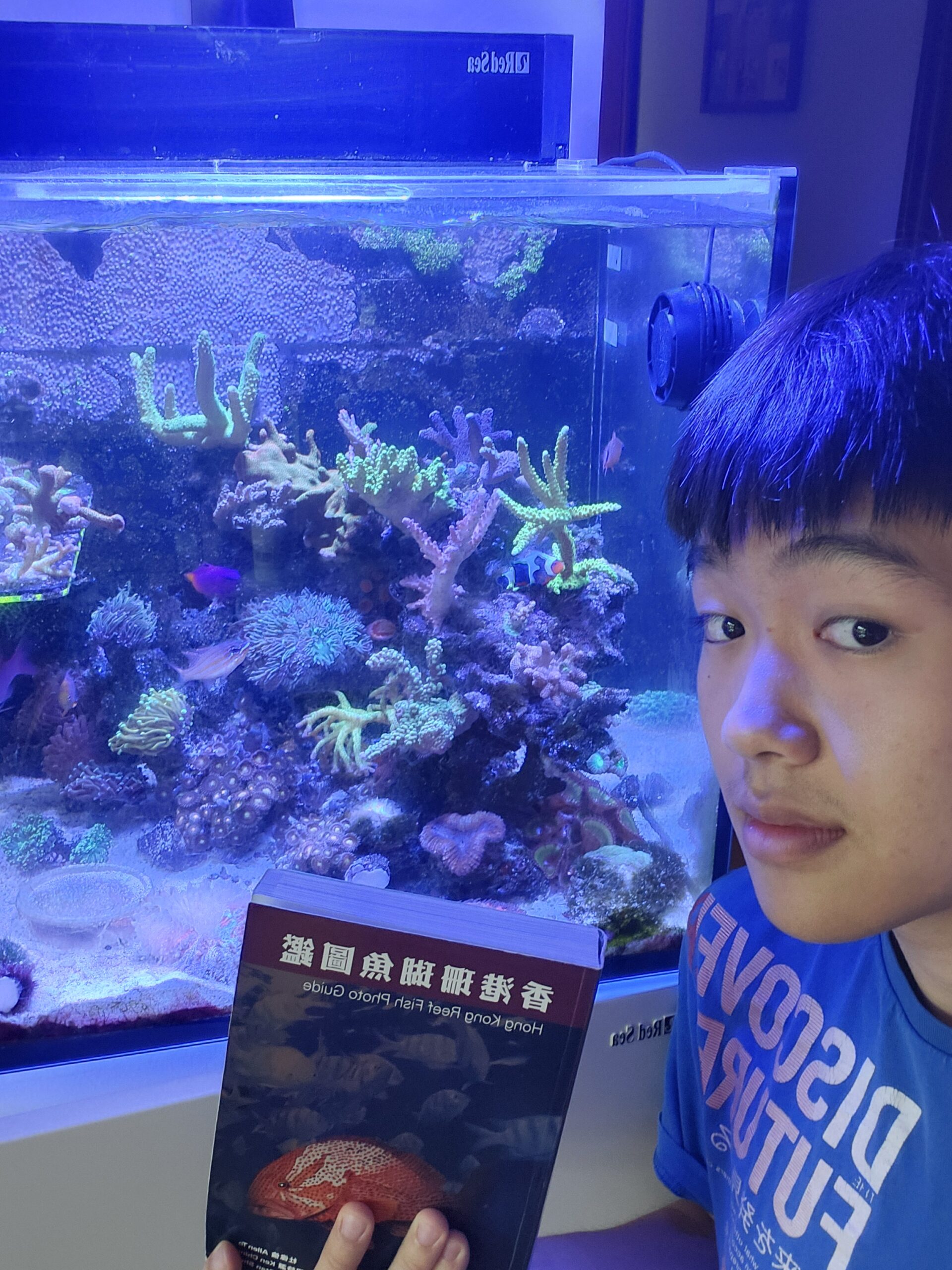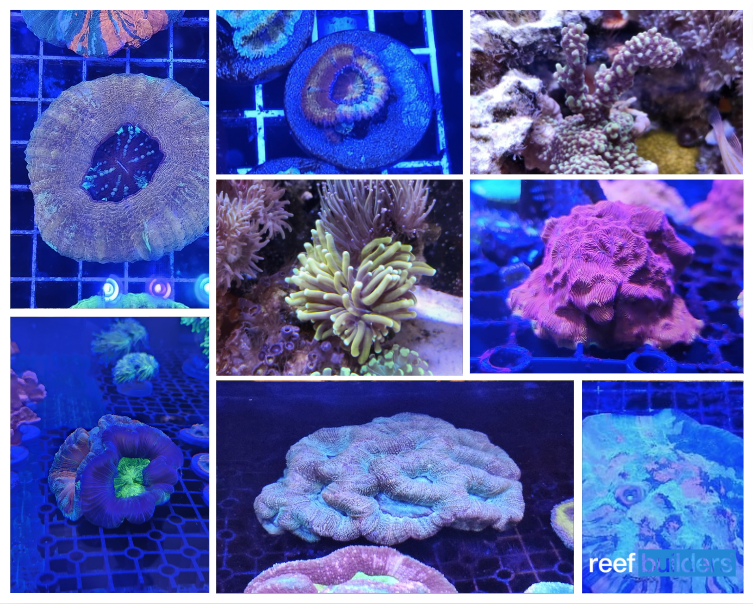Aquacultured corals are becoming more and more popular as we progress in the reefing hobby, but many of the wild or maricultured pieces seem to be appearing less frequently. Those huge tables and clusters of coral which were imported from places like Indonesia or Fiji are falling out of trend or even disappearing from our beloved local fish stores due to multiple factors such as export bans or high shipping prices. They are replaced by the most in-trend and popular pieces of aquacultured frags instead.
Even though we love aquacultured pieces for their hardiness and spectacular colors, aquacultured pieces often lack the mysteriousness or that truly oddball look that we used to get from wild or maricultured pieces. Some of you may recall seeing that coral at a local fish store which noone had any clue what it was. For those who are on the lookout for corals with funky colors, weird growth patterns, or just a huge table of coral for a cheap price, wild pieces still suit some.
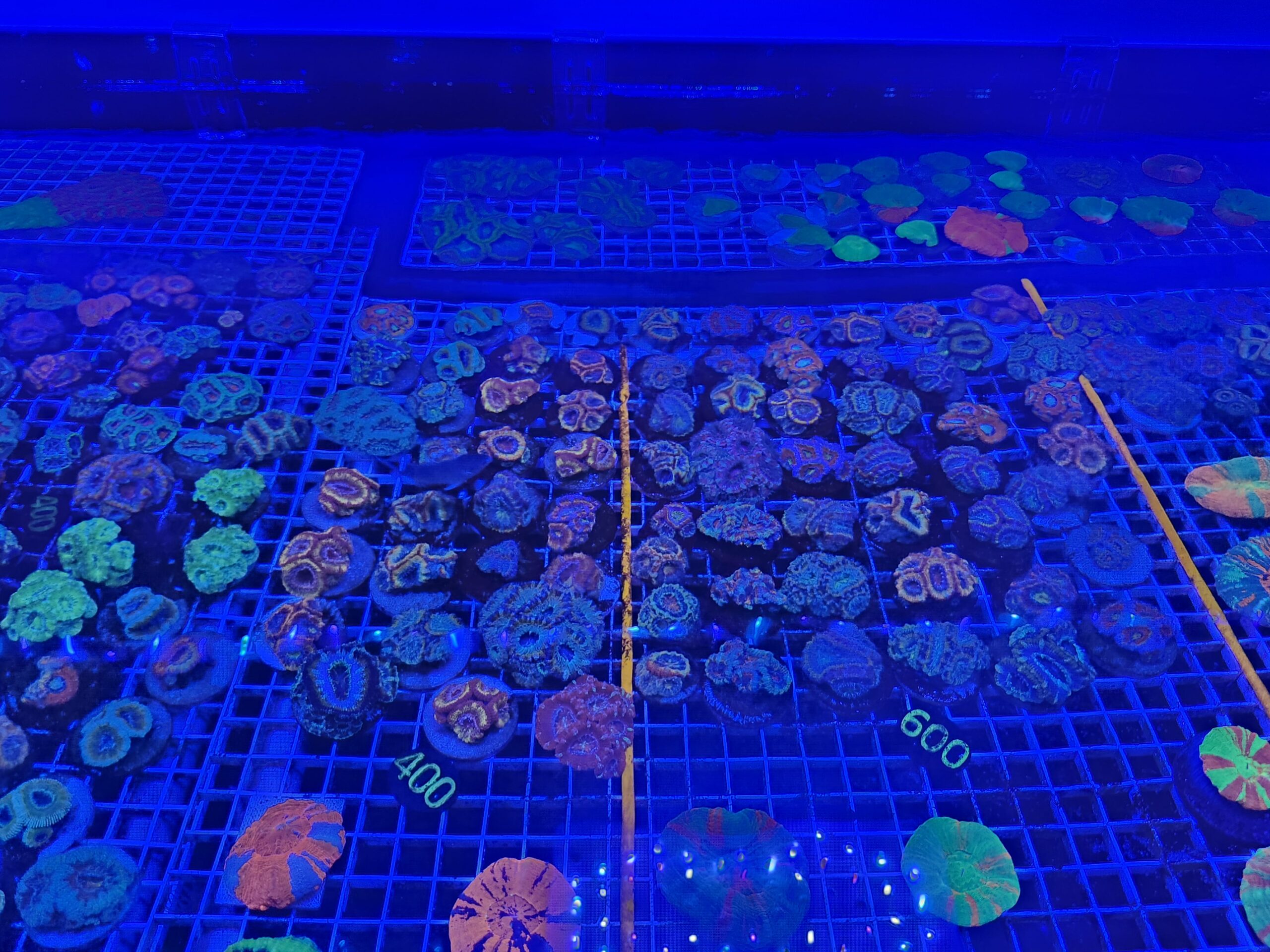
Before aquacultured corals were even a thing, corals were mainly directly harvested from the wild reefs from places like Fiji and Indonesia. Most corals imported from these places were the mainstream corals we had for the past three or four decades such as “Euphyllias” (genus Euphyllia and Fimbriaphyllia), Goniopora spp. and Acropora spp.
Sometimes, these wild coral shipments also came in with corals which were relatively unknown to the regular hobbyists such as Merulina or Isopora, which are sometimes sold for cheap as butterflyfish food here in Hong Kong! Even though these pieces weren’t as showy compared to the other mainstream corals like Acropora, “Euphyllia” or fleshy LPS, they often sparked interest in those who were on the lookout for something special.
Due to the environmental impacts suggested in certain research papers, however, and the reputation of a relatively low survival rate, higher risk of pests, and failing to acclimate to our aquariums, have made them less favorable compared to their aquacultured counterparts which are fully acclimated to most tank conditions. Over the years most local fish stores have been importing more aquacultured corals instead of the wild or maricultured corals like they used to, which isn’t necessarily a bad thing for the environment.
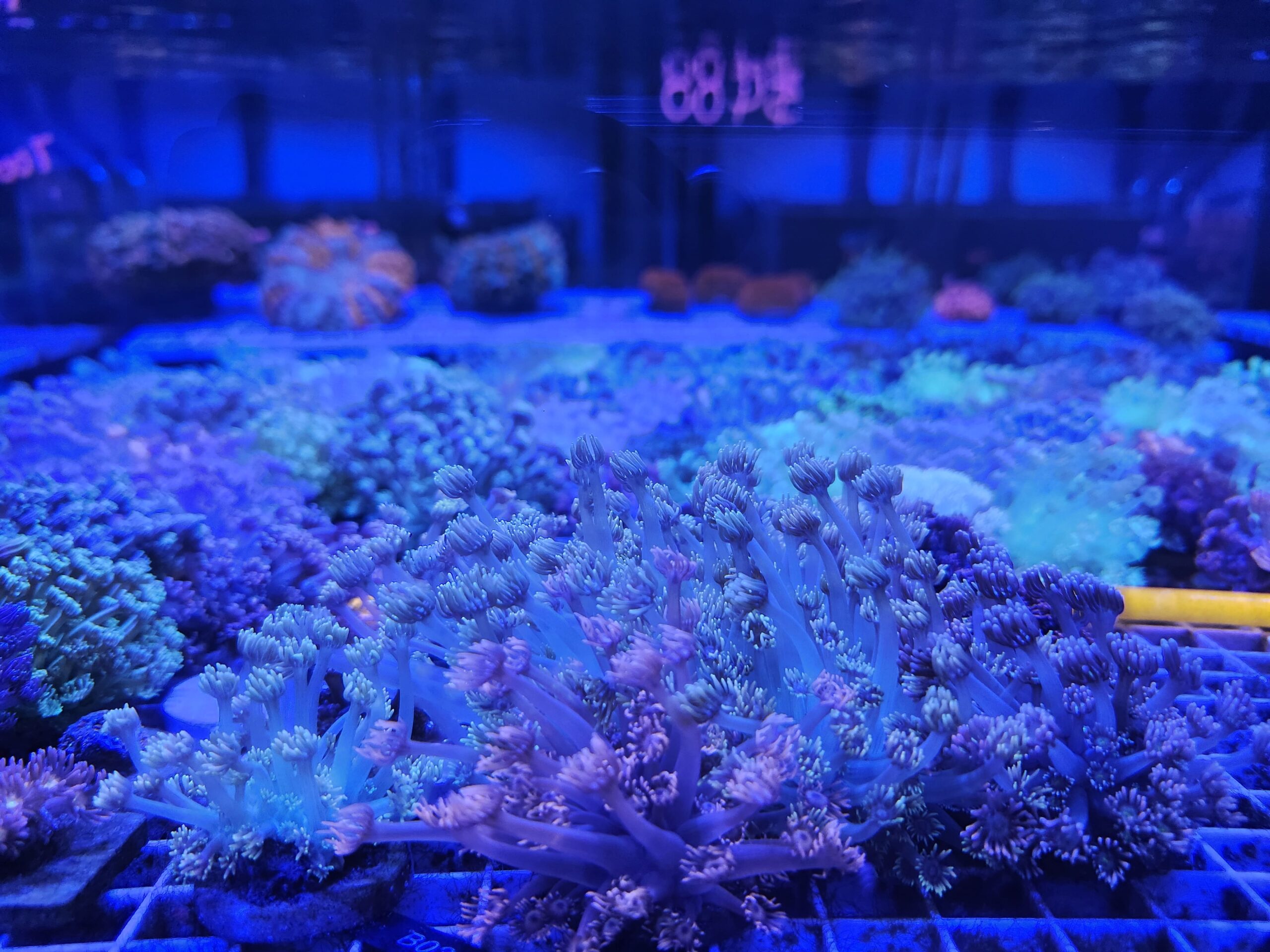
Despite the downsides, there are still good reasons to continue importing them. Firstly, collecting corals can be done sustainably, For example in Australia, there are tight restrictions on the amount of corals that can be harvested annually to ensure that it causes minimal disruption and damage to the reefs. As long as the rules are being implemented and regulated tightly, we can enjoy corals from the natural reefs in a sustainable way.
Secondly, importing wild corals can also provide us with more strains of corals in the hobby and allow us to increase the genetic diversity of corals when it comes to coral spawning in captivity, which can then be used for aquacultured or placed back in the ocean for conservation.
My favorite pieces of wild and maricultured corals
Before I start showing you guys all those pieces of corals which you don’t see everyday, I want to provide some background on the live coral trade here in Hong Kong. Indonesian Acropora, “Euphyllias”, Goniopora and free-living LPS like Cynarina lacrymalis and Acanthophyllia deshayesiana are the most popular and affordable.
Australian shipments are also quite popular but come in less frequently, with the iconic Acropora strains like Strawberry shortcake, Homophyllia australis, and Goniopora being the most frequently imported genre of corals. Large tabling Acropora and bottlebrush Acropora are also starting to be available (as well from Fiji) after reopening its trade of live corals recently.
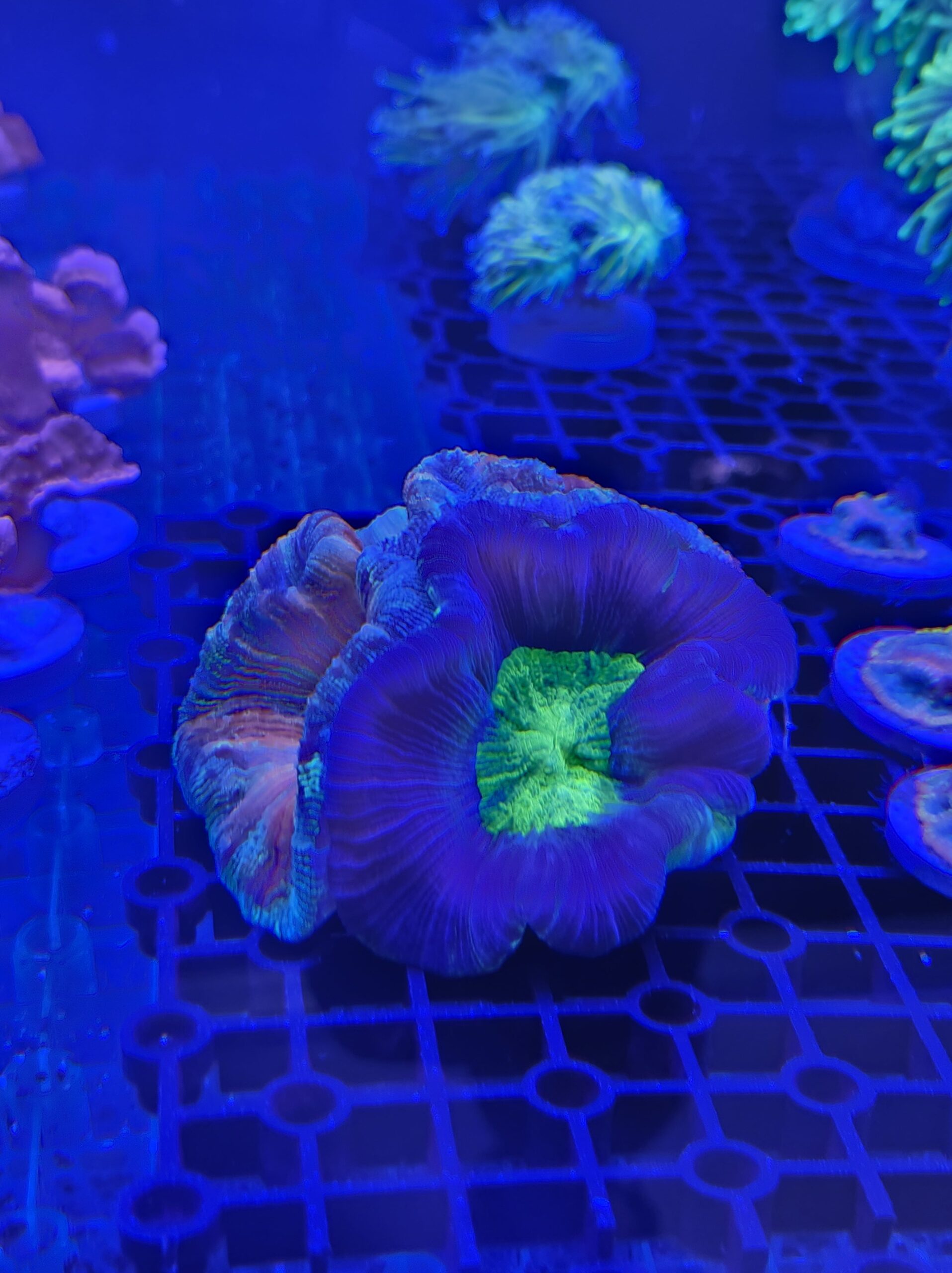
First on the list is a half-and-half coloration Trachyphyllia geoffroyi found at Aqua Prince. This Trachyphyllia specimen has two separate color morphs in one piece. The skeleton also seems to be in one piece and is not artificially grafted together. With one side of the piece having a pinkish “rainbow” color morph, while the other side has a purple skirt with a bright green center. This piece was imported from Indonesia and is for sale for 600 HKD/$77 USD.
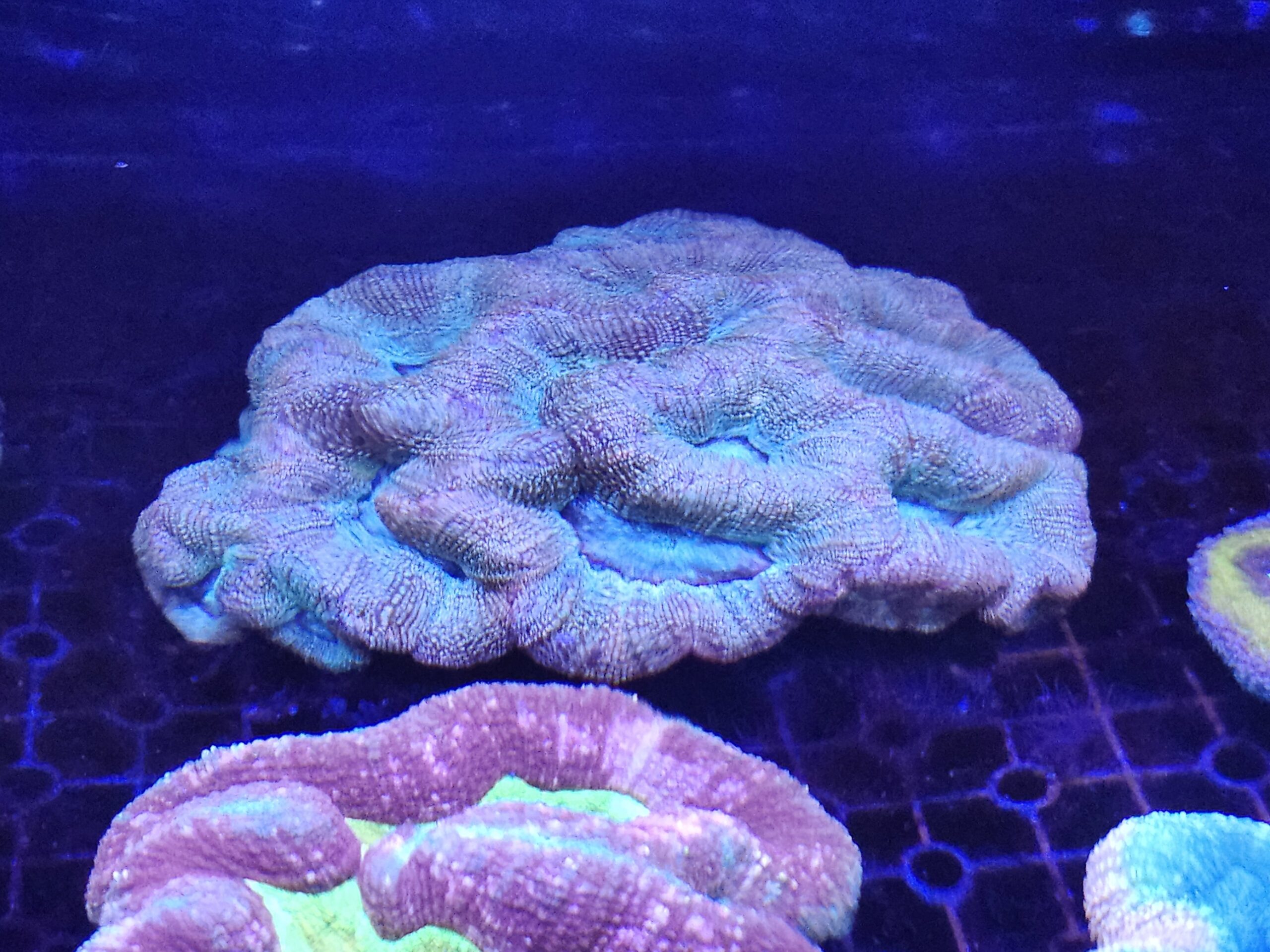
Another piece I found to be quite interesting is this big piece of pink and blue Homophyllia bowerbanki at Forest Ocean Aquarium. We don’t often see many Homophyllia bowerbanki here in Hong Kong other than green and red ones which are sold at way cheaper prices compared to the one above. This larger piece just looks way more aesthetically pleasing compared to the small frags we often see here. What catches my eye is the glowy blue center of each individual polyp, along with its pink glittery skirt.
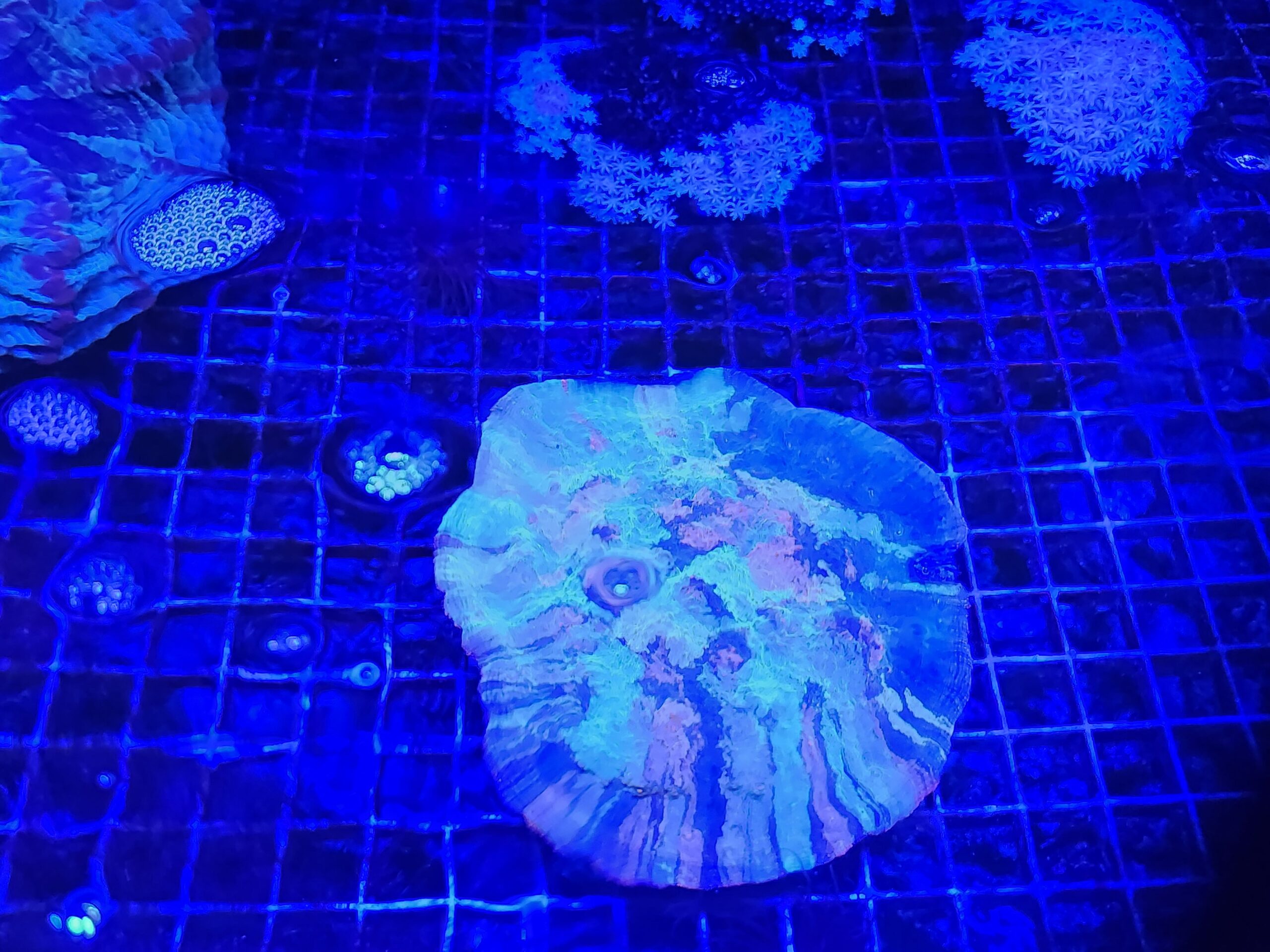
This piece here is a wild piece of multicolored “chalice” from Australia, and I haven’t been able to figure out exactly which species or genus this is. It has many stripes of deep and light blue, orange, and yellow, and a few patches of red on the growth edges, and has patches of orange, and blue in the center of the piece. Sadly, my camera isn’t able to capture just how colorful and stunning this piece is under actinic lighting, as my camera cannot process all of the blue light, the colors may seem a bit washed out in this picture. This piece was photographed at Tops Marine.
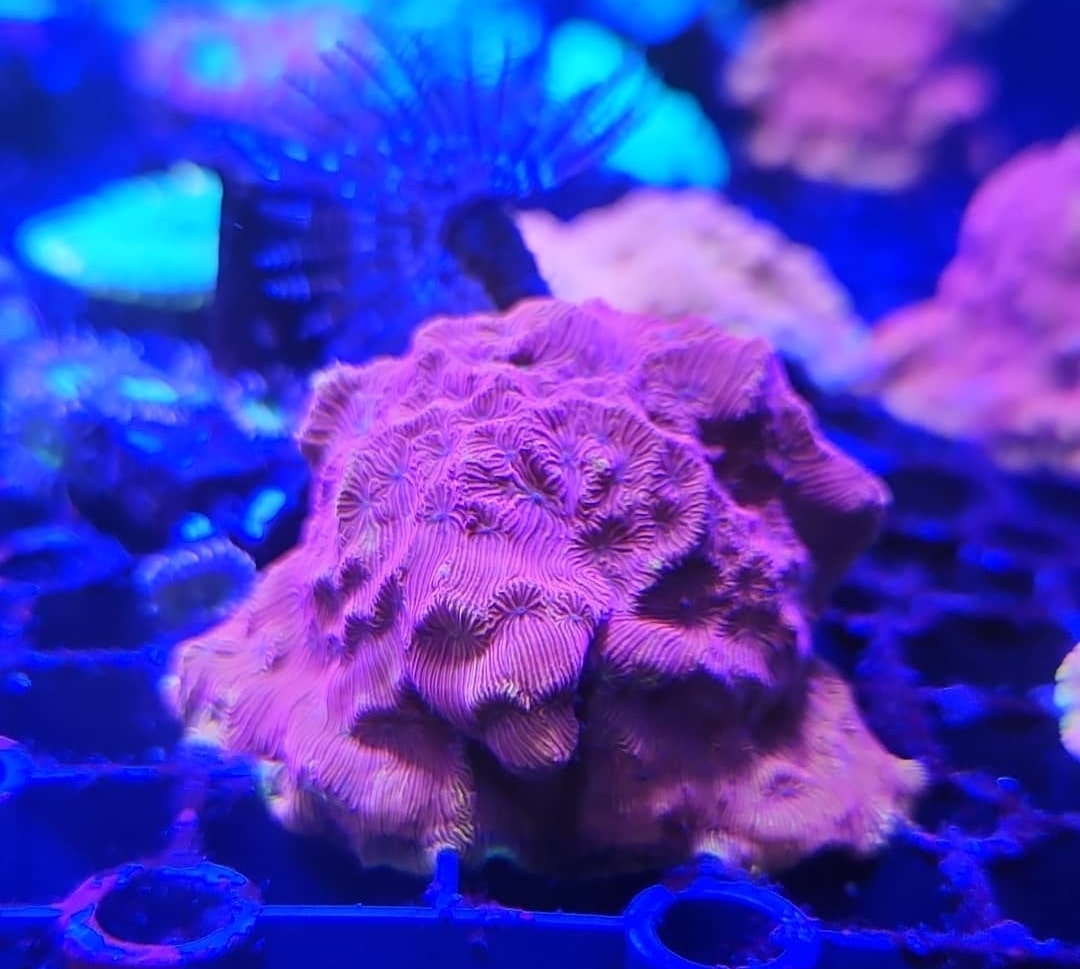
This reddish-pink Leptoseris frag was found at New Hot Aqua. Despite being not as eye-catching as other more popular strains such as the Jack o’ Lantern or the 24K, it still has more than decent color. Other than its mainly pinkish-red coloration, it also has deep purple mouths as well as yellow growth edges. It’s also the first time I have seen a Leptoseris with this type of coloration, and I really hope to have this in my collection one day.
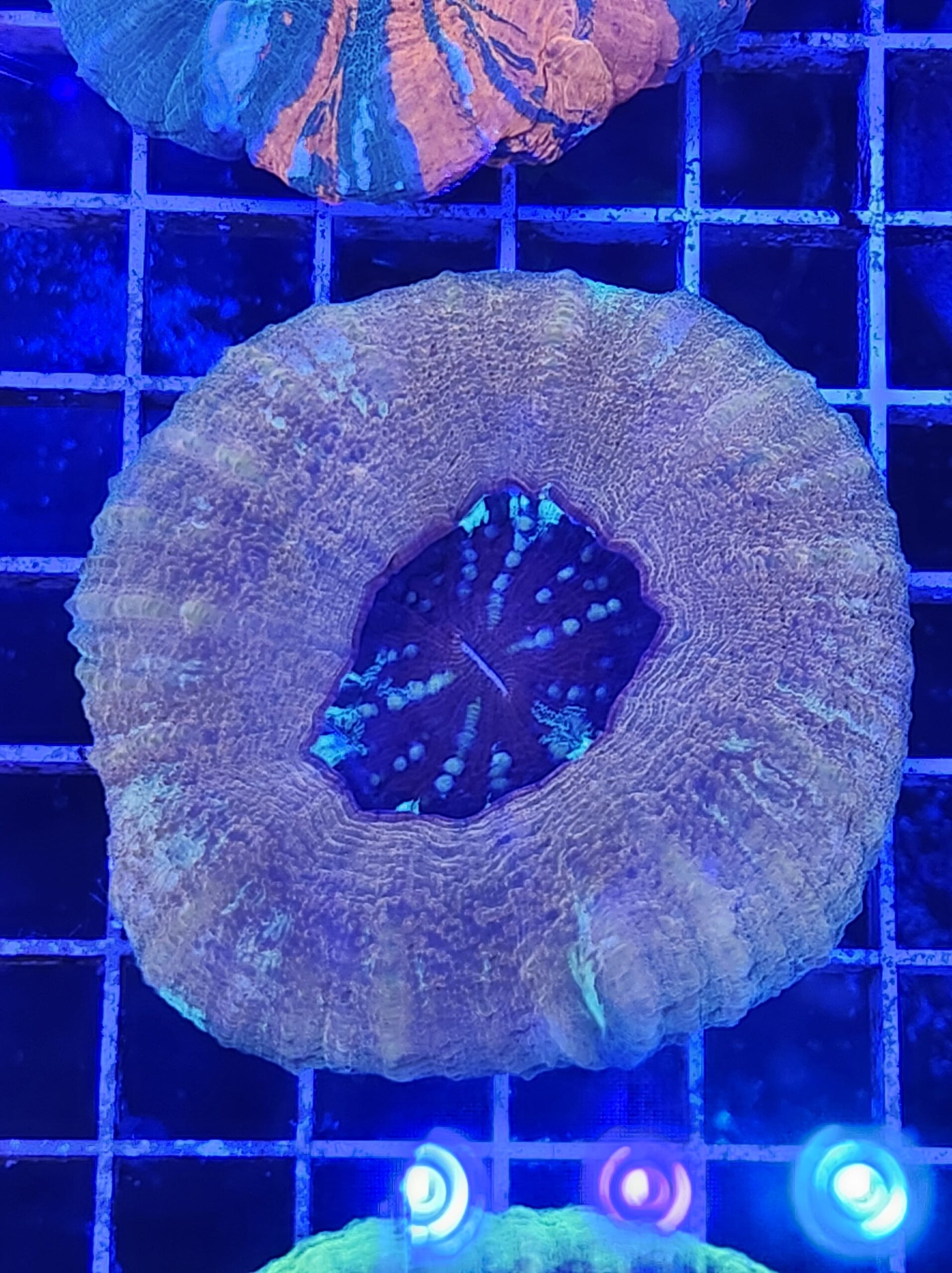
One of the pieces on the list which I really find interesting despite lacking vibrant colors, is the brownish-yellow Homophyllia australis. Usually, scolys come in colors that explode and fluoresce under actinic lighting such as the bleeding apple or warpaint variants, and there are way more vibrant pieces than drab colored pieces. This particularly caught my eye when I was looking at a new shipment from Australia at Broaqua, as it is the first time I saw a piece with this color. Other than a brownish-yellow skirt along with a few stripes of bright green (green stripes developed after arriving at the store), it also has a deep purple center with a few stripes of neon blue.
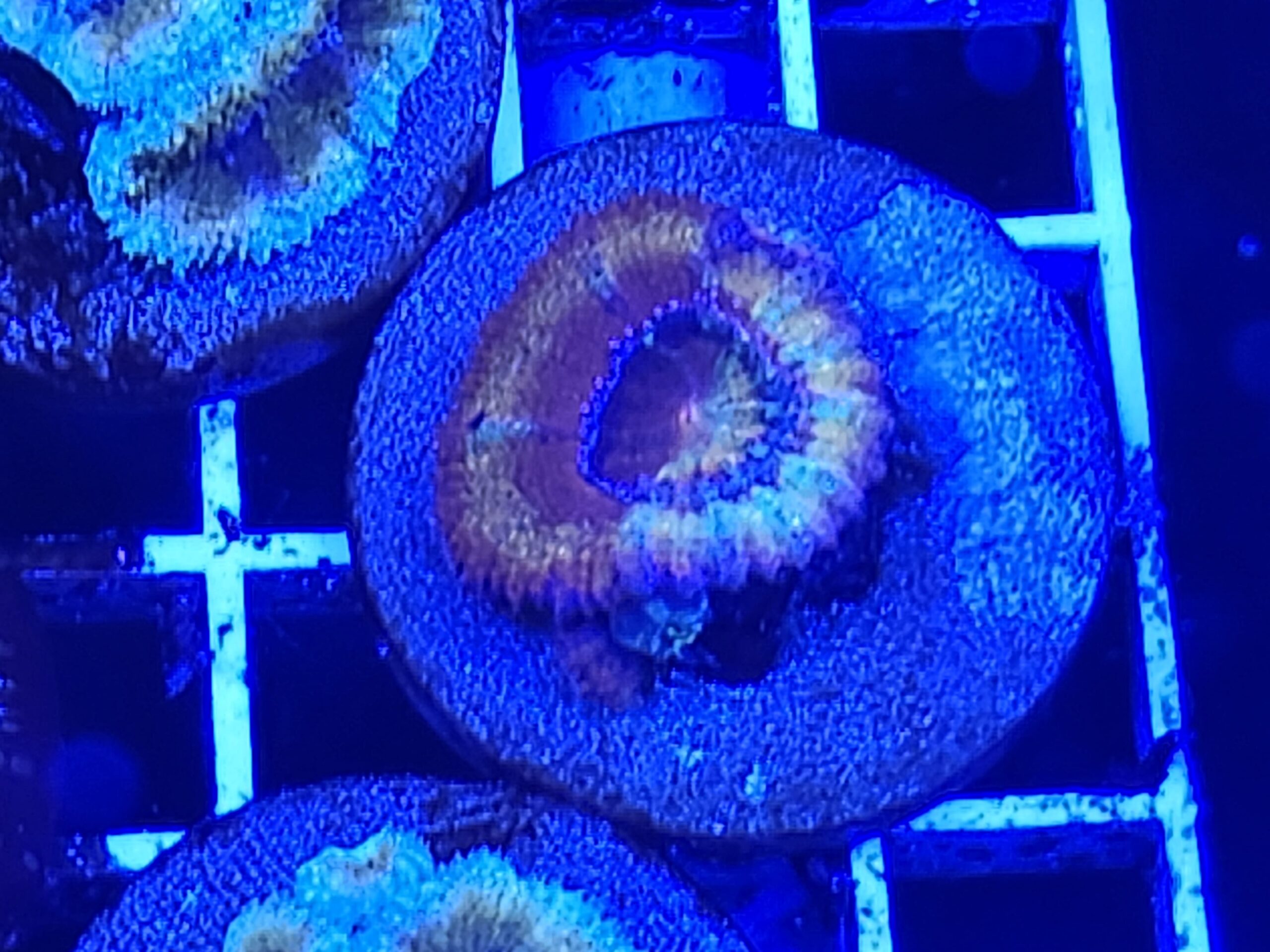
I’m fascinated by naturally grafted corals, such as the Trachyphyllia mentioned above. What makes this one special to me is how they fuse together perfectly, and if one side of the coloration gets overtaken by the other is always fascinating to see. This is another piece Micromussa lordhowensis from the Australian shipment at Broaqua, with one side of the polyp having a deep orange coloration while the other side has a more yellow coloration along with bright blue stripes.
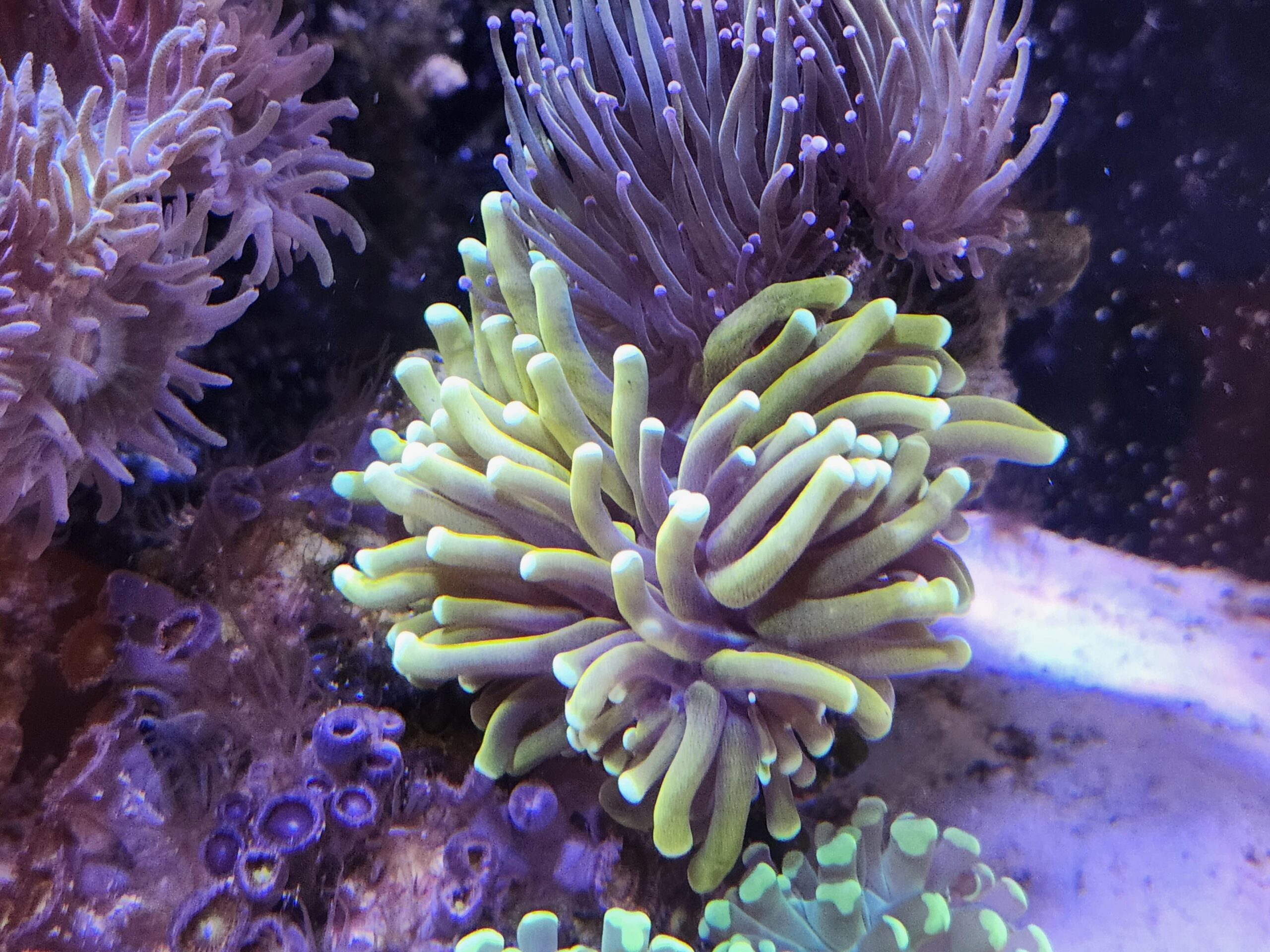
This short tentacle blue-tipped gold torch is one of my favorite wild pieces in my collection. This piece originates from Indonesia, and it displays a bright yellow with a purple base on each tentacle along with a patch of sky blue on the tip of each tentacle. I also believe that this piece is Euphyllia cristata instead of the regular torch coral species Euphyllia glabrescens, as it has thicker and shorter tentacles compared to the regular torch, and is less common within the reef aquarium trade as it is harder to collect due to being less abundant in shallow waters as well as having a more fragile skeleton compared to E. glabrescens.
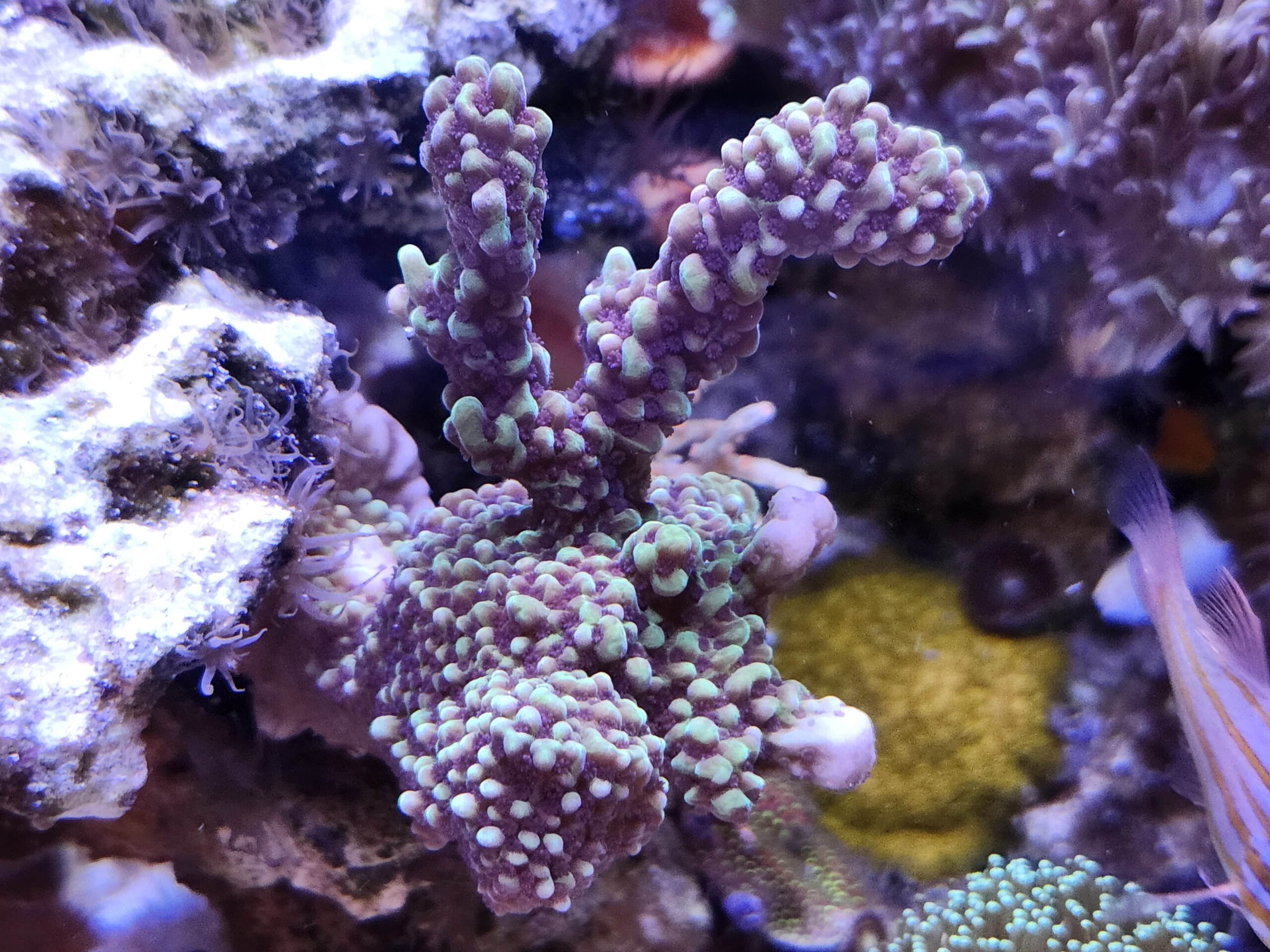
Lastly on my list, and another wild collected piece, is this Montipora sp. I think that this piece might be Montipora confusa, but I’m not entirely sure. So I’ll just stick with calling it Montipora sp. Although this Montipora does not display the best colors, as it does not have very eye-catching colors, it does have very interesting growth patterns.
This piece encrusts onto the rocks more than branching, and this piece does not like to branch upwards but sideways instead. As you can see it has 2 growth tips on the edge but the two main branches facing upwards have never grown in my system. It is also a very fast grower like most Montipora species, which allows me to share frags with other hobbyists who also find this piece interesting.
References
- (Rhyne, A.L., Tlusty, M.F. and Kaufman, L. (2012), Long-term trends of coral imports into the United States indicate future opportunities for ecosystem and societal benefits. Conservation Letters, 5: 478-485. https://doi.org/10.1111/j.1755-263X.2012.00265.x).
- (Expert advice for the assessment of Australian coral fisheries – Queensland Coral Fishery 2006-2007 to 2019-2020, Department of Agriculture, Water and the Environment (DAWE), Wildlife Trade Assessments Section of the Wildlife Trade Office, Canberra, 2021.)
About the author
Aiden Chong is a 16-year-old reef aquarium hobbyist from Hong Kong who started fishkeeping back in 2015. He has 3 years of reefing experience and describes it as his biggest passion. Aiden also does fish identification online and looks out for cryptic species within the local aquarium trade and local fish market. His favorite fish genera belong to Serranidae, Chaetodontidae, and Apogonidae. His favorite corals are Acropora and Tubastrea.
